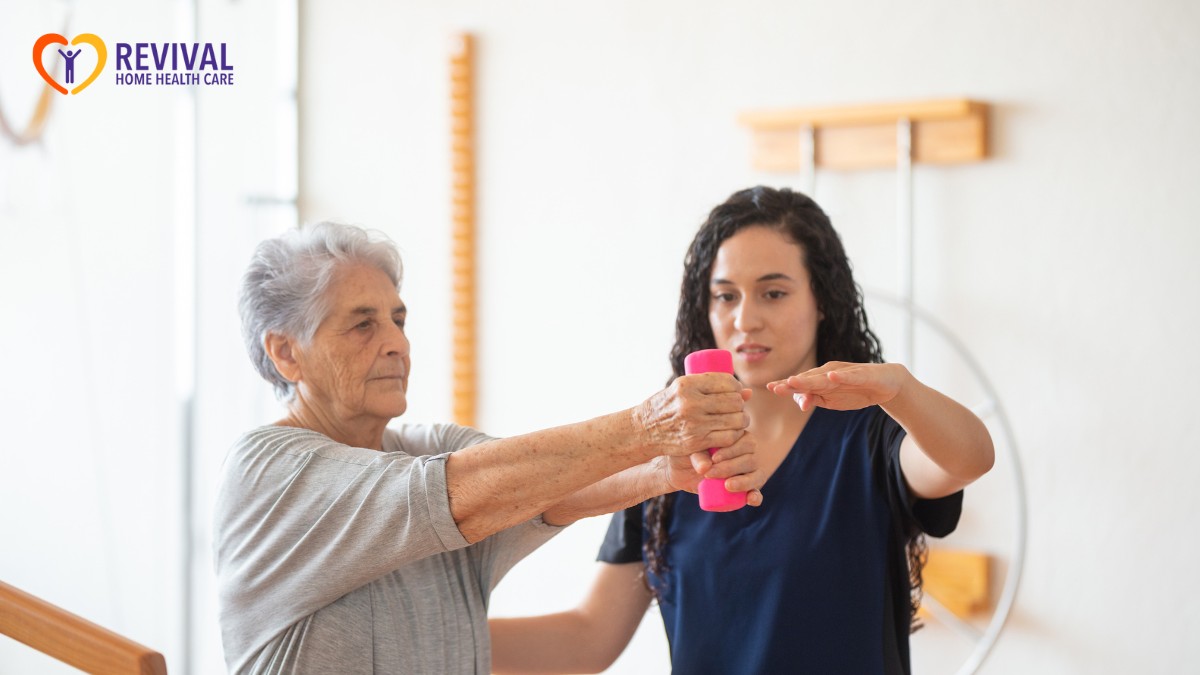Key Points:
- Occupational therapists assess individual needs to identify safety risks and barriers in the home.
- Home modifications may include fall prevention, adaptive equipment, and accessibility improvements.
- In-home occupational therapy supports independence and reduces the risk of injury, especially for seniors and individuals with disabilities.
Making a home safe isn’t just about comfort—it’s about preserving independence, dignity, and peace of mind. For older adults, people recovering from injury, or those living with chronic conditions, the home environment can quickly become a place of hidden risks. This is where occupational therapists (OTs) play a vital role.
Through in-depth assessments and customized interventions, OTs adapt home environments to support safety, function, and confidence in daily living. If you’re searching for ways to make a home safer for yourself or a loved one, you’re not alone—and you’ve come to the right place.
Why Safety at Home Matters More Than You Think
Our homes are filled with familiar routines, but they’re also filled with everyday hazards—especially for those with mobility, vision, or cognitive challenges. Slippery bathroom tiles, dim lighting, steep stairs, or a misplaced rug can all lead to accidents.
Occupational therapists understand how health conditions and aging affect a person’s ability to move and function in their living space. Rather than focusing only on treatment, OTs work to prevent injuries before they happen. They evaluate both the person and their environment to create a safer, more functional home.

What Occupational Therapists Look for During a Home Safety Evaluation
When conducting a home safety assessment, occupational therapists take a holistic approach. They don’t just examine the layout of the house—they evaluate how the person interacts with each space.
Individual Needs and Daily Routines
Every home safety plan starts with understanding the individual. An OT will consider medical history, mobility limitations, vision impairments, cognitive status, and daily habits like bathing, dressing, or preparing meals. They’ll ask questions like:
- Do you use a walker or cane?
- Can you safely get in and out of the shower?
- Do you have trouble climbing stairs or reaching high shelves?
This personalized insight allows the therapist to tailor recommendations to the individual’s exact needs—not just general safety advice.
Environmental Risk Factors
Occupational therapists then assess the physical home for potential hazards. Common areas of focus include:
- Entryways: Are there steps without railings or narrow doorways?
- Bathrooms: Is there non-slip flooring, grab bars, and safe access to the tub or toilet?
- Kitchen: Are appliances within reach and easy to use?
- Lighting: Are hallways and rooms well-lit, especially at night?
- Furniture Layout: Is there enough space for mobility aids, and are high-traffic areas clear?
Even small changes can drastically improve safety. The goal is to remove obstacles that can lead to falls or make everyday tasks frustrating or dangerous.

Common Home Modifications Recommended by Occupational Therapists
After identifying risks, occupational therapists recommend targeted changes. These adaptations don’t have to be expensive or invasive—they’re often simple tweaks that make a big difference.
Fall Prevention Strategies
Falls are a leading cause of injury among older adults. OTs address fall risk with practical solutions, such as:
- Installing grab bars near toilets, showers, and staircases
- Using non-slip mats and rugs or removing rugs entirely
- Recommending footwear that provides better traction
- Suggesting proper lighting in hallways, bathrooms, and near the bed
Improving Accessibility and Ease of Use
For someone with limited strength or dexterity, everyday tasks like opening cabinets or standing from a chair can be difficult. OTs might suggest:
- Lever-style door handles and faucet knobs
- Raised toilet seats or shower chairs
- Reorganizing frequently used items to be within easy reach
- Adding stair lifts or ramps for wheelchair access
Adaptive Equipment and Assistive Technology
OTs are experts in matching people with tools that enhance independence. They can introduce:
- Reachers and grabbers for those with limited mobility
- Button hooks or sock aids for dressing
- Voice-activated lighting or smart home systems for ease and control
- Visual aids for individuals with low vision
An OT doesn’t just recommend equipment—they also train the individual to use it properly and safely.
Adapting Homes for Specific Conditions
Every person’s needs are unique, and some require more specialized solutions. Occupational therapists often work with clients managing specific conditions to modify their homes accordingly.
Dementia and Cognitive Decline
For those with Alzheimer’s or dementia, safety also means minimizing confusion and agitation. OTs may recommend:
- Clear signage or labels on doors and cabinets
- Simple, consistent lighting to reduce shadows
- Removing mirrors if they cause distress
- Securing exits or dangerous items like knives or cleaning chemicals
Stroke Recovery and Neurological Conditions
After a stroke or with conditions like Parkinson’s disease or multiple sclerosis, OTs can help by:
- Creating one-level living spaces when possible
- Recommending handrails and mobility
- Adjusting bed or chair heights to reduce
- Encouraging energy conservation techniques through smart furniture placement
These changes support not just safety, but a higher quality of life.
How Family Caregivers Benefit From OT Guidance
Caring for a loved one at home can be overwhelming. Occupational therapists act as partners, helping caregivers feel more confident and less anxious.
OTs educate caregivers on how to assist safely, reduce their own risk of injury, and communicate better with their loved one. They also offer strategies to prevent caregiver burnout, like streamlining daily tasks and introducing helpful tools. By making the home safer, OTs reduce emergencies and promote smoother caregiving routines.
When to Consider a Home Safety Evaluation
You don’t need to wait for a fall or accident to call in an occupational therapist. In fact, earlier is better.
Consider a home safety assessment if:
- A loved one has recently returned home from the hospital or rehab
- You notice increased difficulty with walking, bathing, or other
- There are signs of memory issues or
- The person has had a recent fall or near-
- You feel unsure about how to support your loved one’s independence safely
A proactive approach can prevent serious injuries and support aging in place.
Make the First Step: Contact Revival Home Health Care
If you or a loved one needs help making the home safer, Revival Home Health Care is here to support you. Our expert team provides in-home occupational therapy in New York, helping clients live more independently and safely in the comfort of their own space.
With personalized home assessments, hands-on guidance, and adaptive solutions tailored to your needs, our therapists bring peace of mind to families across the region. Whether you’re navigating aging, recovery, or a chronic condition, we’re ready to help.
Contact us today to learn how our in-home occupational therapy services can help you or your loved one live confidently at home.


 75 Vanderbilt Ave Staten Island, NY 10304
75 Vanderbilt Ave Staten Island, NY 10304 info@revivalhhc.org
info@revivalhhc.org 718.629.1000
718.629.1000